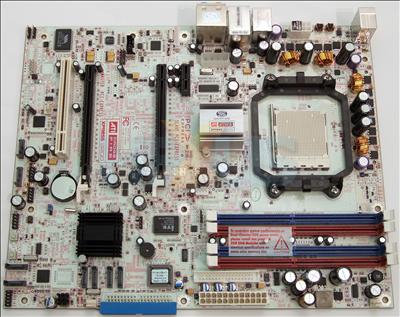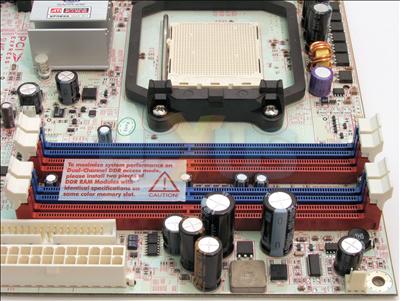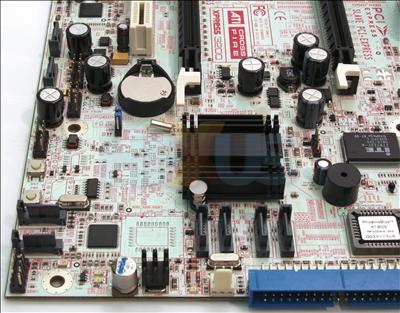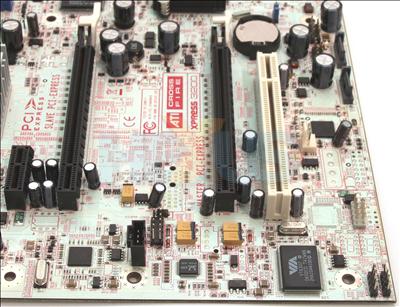Sapphire PURE AM2RD580 layout and features
If the general layout seems somewhat familiar to you; it is. The Sapphire PURE AM2RD580's PCB colour and layout is based upon the ATI Sturgeon reference board that we took a look at here. At that time we voiced our concerns over the general layout, and those concerns haven't been addressed by Sapphire towing the reference line.
The 8-pin SSI connector is still located in an awkward location that's usually reserved for the I/O section. It makes very little sense to have it here, and, like most, it should be situated down the right-hand side of the board. Strangely, Sapphire has chosen not to include the VRM heatsinks that are present on the reference model. We'd have thought that an enthusiast-class board could benefit from any and all cooling that can be made available.
Fan headers are conspicuous by their absence around the CPU socket, too, and the retention bracket is squeezed in between the northbridge and surrounding capacitors. Just take a look back at the Foxconn's design to see how a single-chip architecture and intelligent ASIC placement can help in providing a clean-looking board.
The main 24-pin power and floppy ports are in better locations, though, and the DRAM slots can be accessed without, again, having to uninstall the primary graphics card.
The SB600 southbridge provides a single ATA port and it's rotated to provide an easier, cleaner fit. The '600's 4 SATA ports - which support AHCI, NCQ and RAID0,1,0+1,10 - sit in close proximity and in a good location. A further 4 ports are available through the use of 2 Sil3132 PCI controllers and Sapphire keeps the board-mounted power and reset buttons found on the Sturgeon reference model.
Sapphire, though, chops one of the reference board's PCIe x1 slots and leaves a huge gap between the two x16 PCIe slots. It would have been better to move the solitary PCIc slot to the left of the second x16; it wouldn't have been blocked off by a double-width card, then.
We're also left nonplussed by Sapphire removing the diagnostic LED from its model. We can think of no practical reason to do so.
The aforementioned 8-pin SSI connector sticks out like a sore thumb.














